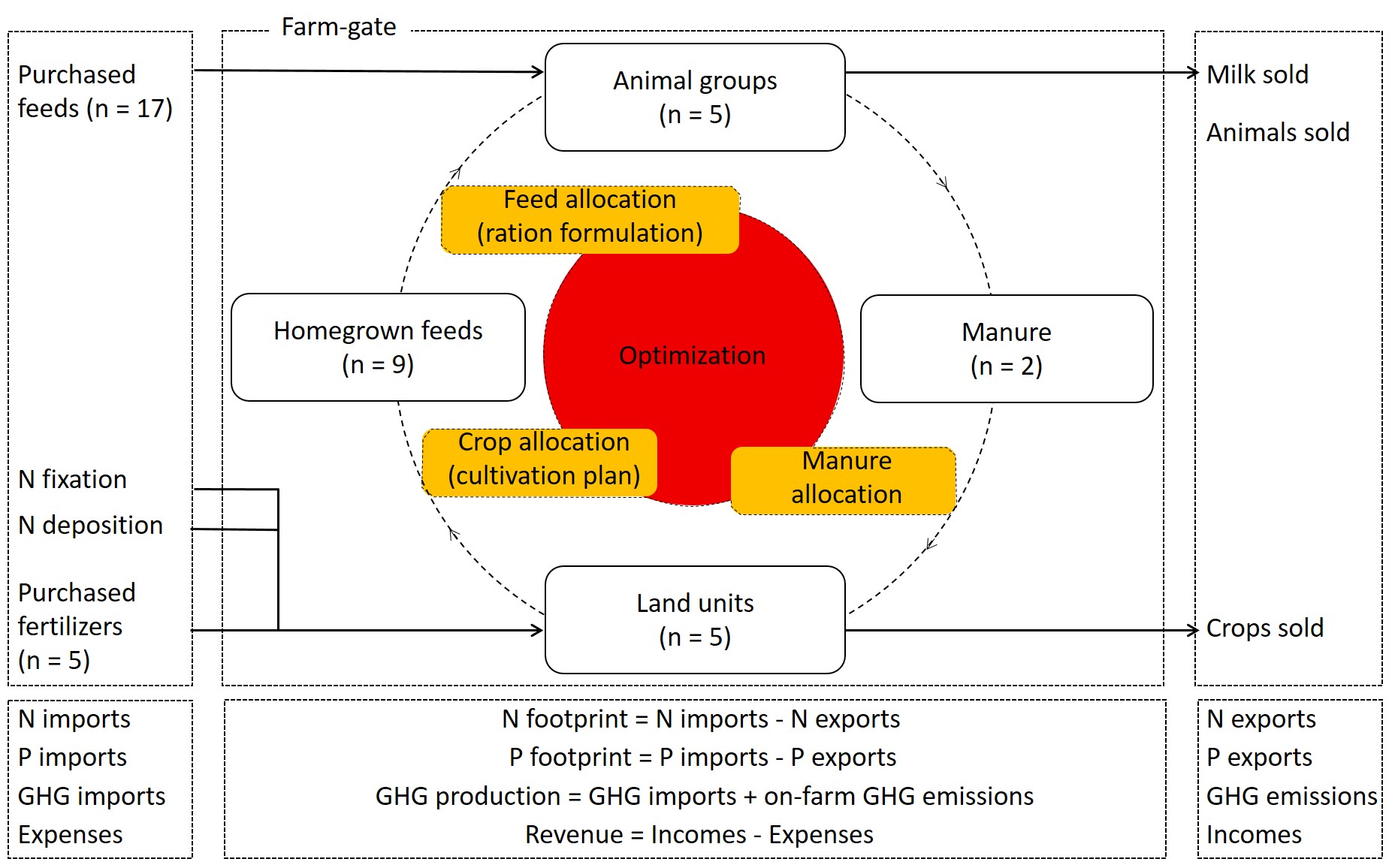Articles scientifiques

- Date de publication : 2019-06-25
Référence
Fournel, S., Charbonneau, E., Binggeli, S., Dion, J.-M., Pellerin, D., Chantigny, M. H., & Godbout, S. (2019). Optimal housing and manure management strategies to favor productive and environment-friendly dairy farms in Quebec (Canada): Part I. Representative farm simulations. Transactions of the ASABE 62(4): 959-972.
Mot(s) Clé(s)
Lait Fumier Environnement
Résumé
Tie-stall housing (93%) and solid manure management (44%) are used on many dairy farms in the province of Québec, Canada. However, this could change in the near future because the rise in average herd size and the popularity of milking robots are such that the industry expects an increase in free-stall dairies managing manure with liquid systems. This shift could affect the carbon (C), nitrogen (N), and phosphorus (P) footprints of Québec‘s dairy production. In this context, whole-farm modeling (N-CyCLES), considering all the production cycle, provides a tool for evaluating the economics and environmental impacts of standard housing and manure management systems (Part I) in combination with different mitigation approaches (Part II). Two representative dairy farms in southwestern Québec (SWQ; 45.3° N, 73.2° W) and eastern Québec (EQ; 48.45° N, 68.1° W) were simulated considering four scenarios involving combinations of tie-stall or free-stall housing and solid or liquid manure management. Maximum farm net income (FNI) was $0.33 and $0.18 kg-1 of fat- and protein-corrected milk (FPCM) for the SWQ and EQ farms, respectively, with N and P footprints of 12.22 to 16.99 g N kg-1 and 0.52 to 0.79 g P kg-1 of FPCM in SWQ, and 11.48 to 15.39 g N kg-1 and 1.41 to 1.88 g P kg-1 of FPCM in EQ. Greenhouse gas (GHG) emissions reached 1.78 to 1.87 kg CO2e kg-1 and 1.67 to 1.71 kg CO2e kg-1 of FPCM in SWQ and EQ, respectively. The SWQ farm was associated with greater production of cash crops but also greater imports of fertilizers and purchased feeds, which negatively affected the N footprint and GHG emissions. Housing and manure management types did not influence FNI. Free-stall dairies were associated with greater N surpluses. Nevertheless, they emitted slightly less GHG than tie-stall dairies. Dairy farms under liquid manure management imported less fertilizers and produced less GHG despite greater CH4 emissions. As a result, the current transition toward free-stall barns and liquid manure systems in Québec seems advantageous from an environmental standpoint without compromising economic profitability.



